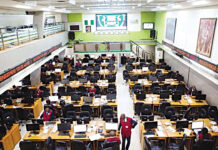According to a recent study by Saxo Bank, distinguishing between risk and uncertainty may seem straightforward, but it is crucial. Risks are quantifiable when enough data is available, whereas uncertainty involves factors that cannot be quantified. Geopolitical events, by nature, revolve around uncertainties and the inability to predict outcomes accurately.
Peter Garnry, head of equity strategy at Saxo Bank, points out that the developments following Russia’s invasion of Ukraine indicate the emergence of a war economy, especially in Europe. This situation is likely to lead to increased government spending and continued inflation. Trade policies are also becoming a part of the shifting geopolitical reality, where growing tensions between Europe, the US, and China are a major source of uncertainty and inflation. China’s focus on exports leads to policies that clash with the national security interests of Europe and the US, with tariffs and industrial policies expected to gain importance over time.
China’s export-driven economy makes it sensitive to fluctuations in foreign currency prices against its competitors, and particularly, the Japanese yen poses significant concern, as highlighted by Charu Chanana, head of forex strategy at Saxo Bank, in her report “The Double Whammy for the Chinese Yuan: Dollar Strength and Yen Weakness.” South Korean officials have recently emphasized the need to address sharp unilateral currency price movements, which could lead to a major reset in currency markets.
Enhancing investment portfolios for the future
In the past, asset allocation was relatively straightforward, as the long period of low bond yields, stable geopolitical landscape, positive demographics, absence of climatic disasters, and low inflation rates provided a different investing environment. Moving forward, investors must consider global variables more closely.
Some may question the viability of fully investing in stocks and betting on historical performance. However, given the numerous structural shifts occurring in our global economy, relying on past strategies that have been successful since the early 1980s now carries significant risks.

In a study seen by Al Arabiya English, Garnry suggests that investors should incorporate certain components into their investment portfolios to enhance their resilience against a wide range of scenarios in the era of a war economy and negative demographic trends:
Investment in strategic sectors
Semiconductors and artificial intelligence will play a key role in shaping future powers. The defense sector is also crucial, given Europe’s significant military capability shortfall and the need for new technologies to counter drone swarms. Cybersecurity is becoming the new operating system for governments and companies alike. Additionally, the renewable energy sector reduces national security risks by diversifying energy sources and enabling decentralized energy distribution, which inherently reduces risks.
Strategic equity sectors
According to Saxo Bank’s quarterly forecasts, the four most strategically attractive sectors for long-term investment are healthcare, technology, finance, and energy. Based on current information, these sectors are poised to yield significant real returns over the next decade.




